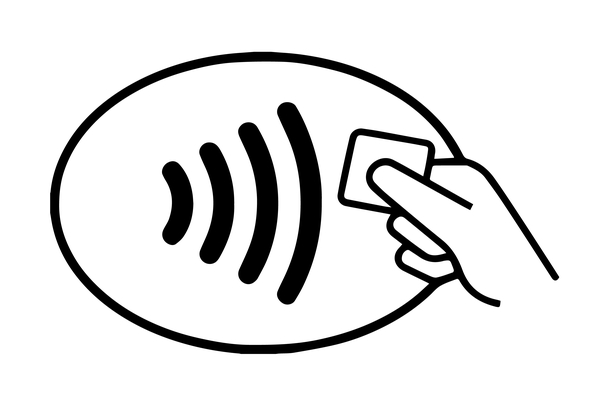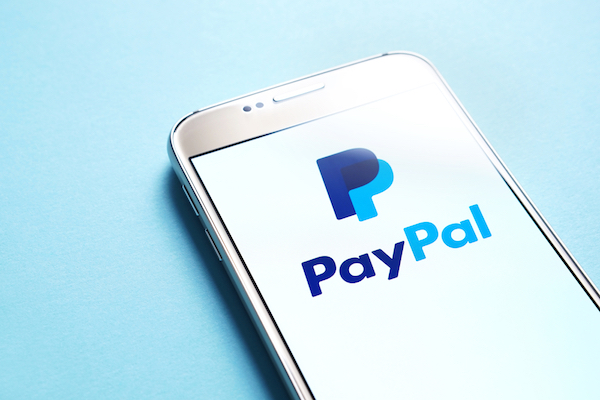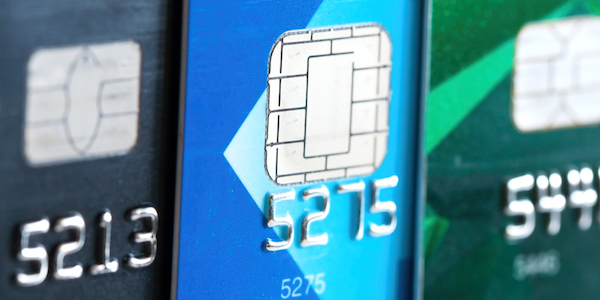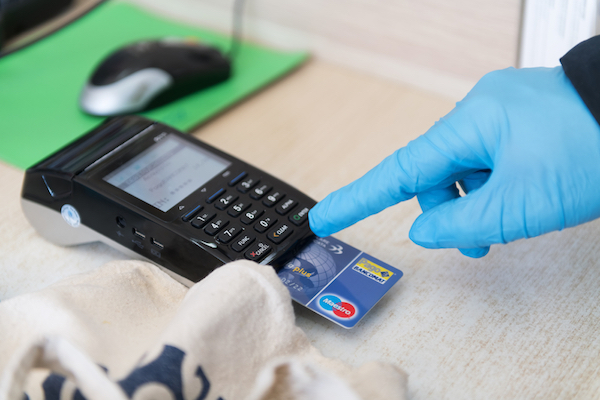IMPORTANT UPDATE FOR 2021: Congress has approved an extension of the PPP loan program. Applications may be submitted to SBA until May 31, 2021, including “second draw” PPP loans for businesses that received PPP funding in 2020.
In this 7-minute read:
- Contactless and lower-contact payment options for reducing possible transmission of coronavirus or other pathogens
- The benefits and problems of cash
- Proper sanitation of payments surfaces and terminals
- Mobile payments options for businesses
As businesses reopen following COVID-19 shutdowns, there is of course heightened concern about sanitization of surfaces and improved procedures to help reduce the possible transmission of pathogens.
One issue most small businesses have in common is the problem of how to facilitate and accept payments safely while still providing options for as many customers as possible. In this article we’ll examine some proven options and recent innovations in cashless, contactless, and/or limited contact payments, as well as how to deal with the problem of cash.
Womply Pay is the fast, secure way to accept and request payments. Make it easy for customers to pay you anytime, anywhere. Learn more or try it for free!
As you start opening your business to on-site customer interactions again, you must ensure that you and your staff take seriously any recommended safety and sanitization measures designed to prevent the spread of COVID-19.
Cash is still king for small transactions, but is not sanitary during COVID-19
Roughly 40% of transactions in the U.S. are still made with cash, including 55% of sales under $10. There have been several attempts at “cashless stores,” but due to concerns about potentially discriminating against the “unbanked” portion of the population, they inevitably are forced to accept cash in most cases.
However, during COVID-19 many local businesses have prohibited the use of cash, and most local governments are turning a blind eye for the moment.
Womply has made email marketing truly automatic for busy small business owners and all types of independent contractors. Learn more, plus get free reputation monitoring and customer insights when you sign up for Womply Free!
Cash is anonymous, quick, fee-free, and universally accepted as legal tender by federal law, but there are obvious issues with its use during COVID-19. Handing any object from one person to another is risky at the moment, but particularly paper bills and coins of questionable history and cleanliness.
If you decide to or are required by law to continue accepting cash, the following tips can be helpful in reducing the risk of transmission of disease:
- Ask customers to place bills and coins on the counter or into a dedicated tray, rather than handing money to cashiers directly
- Train your employees to place change back on the counter or tray, rather than handing it to customers
- Clean and sanitize the contact surfaces after each cash transaction
- Consider separating any cash-counting areas with dividers, and make sure staff use protective gloves, masks, and/or other PPE when counting or handling cash
Contactless RFID or NFC payment options: Pros and cons
Contactless payments can be made via certain credit cards, debit cards, key fobs, smart cards, “wearables” or other devices including smartphones, that are capable of using radio-frequency identification (RFID) or near field communication (NFC). These cards and devices allow payments to be made without actually requiring any physical contact between customers or their devices/cards and your payment terminal or employee.

Well-known contactless examples include Apple Pay, Samsung Pay, Google Pay, and Fitbit Pay. Your bank’s mobile application may also support contactless payments.
The obvious benefits to contactless payments are that there is no required pin, signature, or other validation of purchase in most cases, which prevents contact-transmission of viruses and bacteria.
(Some contactless-enabled fuel stations still require customers to input their zip codes or other information on a keypad or touchscreen, and some payments providers or card companies may ask for a PIN in addition to a contactless scan.)
Contactless payments require close proximity (definitely closer than 6 feet) between customers and payment terminals, so there are still potential problems with that. But the fact that there is no physical contact required makes this type of payment particularly beneficial during COVID-19.
However, since there is no “validation” step or 2nd-tier confirmation of identity such as a PIN, digital signature, or physical signature required for contactless payments, there is a greater risk of fraud. There’s a window of time between when a victim of card theft notices the missing card and when they report it to the issuer, for example. For this reason, contactless payments are often restricted to lower-value purchases where convenience and speed are key factors.
Let’s talk about some payment options that allow even greater distance between payer and payee.
Mobile, web, and app-based payments allow social distancing during COVID-19
Mobile payments, unlike “contactless” RFID/ NFC payments, rely on broad-area cellular or WiFi networks and do not require close physical proximity for a payments scan.
Some examples include web- or app-based offerings like PayPal, Venmo (see below for potential issues for business transactions), and Zelle.

The obvious advantage during COVID-19 is there is absolutely no physical contact made between purchaser and seller. As long as you are set up to receive payments via one of these services, your customers validate their identity and authorize payments entirely via their mobile device or smartphone.
Disadvantages to small businesses may include an increase in checkout time waiting for customers to prepare and authorize payment via their mobile devices, and PayPal charges a healthy percentage (fee) to sellers for the use of its services.
Zelle is free for consumers and person-to-person transfers, but your bank may charge you a fee depending on several variables. Your business account will also need to be with a bank that offers Zelle if you wish to accept that type of payment.
Venmo is owned by PayPal and has increased dramatically in popularity over the past couple of years, but from what we can tell it’s problematic for businesses to accept Venmo payment in exchange for goods and services.
The option may be offered by your payments provider/point of sale technology, sometimes in association with your business PayPal account or card, but according to Venmo:
“Venmo is designed for payments between friends and people who know and trust one another.
“You may use Venmo to pay for goods or services using a Venmo card [emphasis added] at merchants that accept the card or through mobile websites or apps that are approved to offer Venmo as a payment option. If available, the option to pay using Venmo will appear as a Venmo-branded payment button at checkout or, in some cases, may appear after you first select PayPal as your payment method. Additionally, you may use Venmo to pay for goods and services when directly given the option to do so by Venmo.
“Venmo may NOT otherwise be used to receive business, commercial or merchant transactions, meaning you CANNOT use Venmo to accept payment from (or send payment to) another user for a good or service.”
EMV (chip) card payments: not completely contactless, but more secure
EMV (named after Europay, Mastercard, and Visa, who first designed the system) payments, commonly called “chip cards,” have come into widespread use over the past few years, and will soon be required by most issuers due to the greatly increased security and fraud protection provided.

“Dipping” or inserting a chip card into a payment terminal allows the internal chip to be read and validated, and since this is usually backed up by either a PIN or a digital signature, these payments are very secure.
However, there is the obvious downside during COVID-19 of the necessary contact between card and terminal, as well as physical contact between the customer and the PIN pad and/or touchscreen or pen/stylus for a signature validation.
These types of payments also require close proximity of customers and employees who are facilitating the transaction, similar to contactless payments discussed earlier.
Plexiglass barriers, “sneeze guards,” or other dividers between customers and cashiers can help reduce the transmission of airborne or contact-transferred pathogens. Regularly sanitizing all contact surfaces in accordance with the CDC’s and your local health department’s directives is key as well.
Telephone and other “card not present” payments
The simplest way to adapt your existing point-of-sale process to a no-contact payment method is by using the good old-fashioned telephone. Customers can call you and you can choose to input their payment information, usually a credit or debit card, manually. Nearly all POS systems allow this type of payment, and you can use address verification and/or CVV code (the three-digit code unique to each card, usually on the back) to reduce some of the increased fraud risk for this type of CNP (“card not present”) payment.
Depending on your payments agreement, you will probably be charged a slightly higher fee by your processor for this type of CNP payment, due to the slightly increased risk. However, you may be able to negotiate a lower rate via your merchant services provider due to the current crisis and the obvious increased need for contact-free payments.
Additionally, there is the issue of phone payments taking more time than self-checkout, online/mobile payments, or other social-distance-friendly options. Businesses with tight appointment schedules may wish to add extra time between clients to allow for both increased sanitization procedures as well as the added time it takes for each customer to pay.
Properly sanitizing payment terminals and other point of sale technology
Tablets, card swipers, POS terminals, PIN pads, signature screens and styluses, etc. should be regularly sanitized, preferably after each use. This may be required by your local heath regulations during COVID-19 so be sure to check.
These sanitizing directives for COVID-19 come from the CDC:
- Wear disposable gloves when cleaning and disinfecting surfaces
- Clean surfaces of spills and debris first using soap and water, and then use a disinfectant. The soap and water will reduce the amount of germs and other impurities on the surface, and following up with disinfectant will kill more germs on the surface
- Be sure to follow the instructions on disinfectants—the solution won’t be as effective if these instructions are not followed (i.e. leaving the solution on the surface for a certain amount of time, don’t dilute beyond the manufacturer’s recommended effective limit, etc.)
- If you have run out of commercial disinfectant, a bleach solution can be effective against the coronavirus. Check the label of your bleach product to see if it is intended for disinfection and to make sure it is not past its expiration date. Follow the instructions from the manufacturer for proper dilution, application, and ventilation and never mix bleach with ammonia or other cleaners. Leave the solution on the surface for at least 1 minute before wiping it down.
Please check with the manufacturer of your payments device or your merchant services provider before applying any chemicals to the devices, screens, or other surfaces, as some chemical cleaners and some plastics don’t get along well.
You can often cover PIN pads and other payments contact surfaces with a cling-type plastic wrap to both protect the device from the ingress of pathogens and cleaning solutions as well as allow more frequent cleaning without fear of damage.
In cases where you elect to use a card reader to “swipe” the magnetic strip of credit cards, ask customers to do it rather than employees handling the cards, and if you allow the addition of a tip and/or a signature is required, consider using disposable styluses if possible, or be sure to sanitize tablet surfaces and styluses after each use.

Following these steps will help prevent the spread of the virus give your staff and customers more peace of mind in these uncertain times.
Read more: Reopening guides for small businesses during COVID-19
Retail businesses, restaurants, and hair/nail salons can get a good overview of potential issues and best practices from the following guides dealing with reopening following COVID-19:
- Reopening guidelines and tips for hair and nail salons post COVID-19
- Reopening your retail shop after COVID-19: tips and best practices
- How to reopen your restaurant safely after COVID-19
Womply Pay makes it easy for customers to pay you anytime, anywhere, with contactless payments
Womply Pay is the fast, secure way to accept and request contactless payments. Make it easy for customers to pay you anytime, anywhere. Learn more or try it for free!
Win new customers and build loyalty with your existing customers with Womply Email Marketing
Womply has made Email Marketing truly automatic for busy small business owners, independent contractors, and sole proprietors. Womply helps you turn customers into regulars and get more repeat business with targeted emails that send automatically when customers transact with you. Build customer loyalty and revenue, and get more repeat business with just a few clicks!
Learn more, plus get free reputation monitoring and customer insights when you sign up for Womply Free!
https://wedc.org/wp-content/uploads/2020/05/COVID-19-Retail-Services-Guidelines_1.pdf
https://en.wikipedia.org/wiki/Contactless_payment
http://www.greensheet.com/emagazine.php?article_id=6145
https://help.venmo.com/hc/en-us/articles/217532097-Can-I-use-Venmo-to-buy-or-sell-merchandise-goods-or-services-
https://blog.globalpaymentsinc.com/en-us/2020/04/17/accepting-payments-during-covid-19